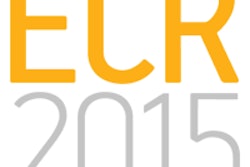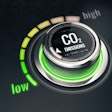
Providing appropriateness training to emergency department (ED) doctors for ordering CT pulmonary angiography (CTPA) exams doesn't necessarily reduce inappropriate use of the test, according to a new study published in the September issue of Academic Radiology. It can even have unintended consequences.
Researchers at Texas Scottish Rite Hospital for Children discovered that ED physicians actually ordered more inappropriate CTPA exams for detecting pulmonary embolism (PE) after attending an educational session on the appropriate use of the imaging study.
 Dr. Yassine Kanaan.
Dr. Yassine Kanaan.
"We found that clinicians employ a very low threshold to test for PE, resulting in a very high rate of negative testing and a low rate of PE diagnosis," wrote a team led by Dr. Yassine Kanaan. "After a single medical educational intervention, the appropriate utilization of CTPA studies did not significantly change in the short term."
If untreated, PE has a mortality rate of 30% to 35%; if treated, that rate drops to less than 5%, according to the researchers. That's why emergency room doctors consider a diagnosis of PE, knowing that quick diagnosis and treatment can save a patient's life. The problem is that the clinical diagnosis of PE can be unreliable because patients may not have clear-cut symptoms (Acad Radiol, September 2013, Vol. 20:9, pp. 1107-1114).
1st imaging test
CTPA is widely used as the first diagnostic imaging test in ED patients with suspected pulmonary embolism, as doctors perceive it to be an accurate, convenient test. But how often does CTPA actually confirm PE? About 10% to 23% of the time, according to clinical studies, which suggests considerable overuse. And the prevalence rate for PE by CTPA may actually be quite a bit lower, according to the authors.
"Personal observations from cardiothoracic radiologists at our institution indicated a positive rate of 3% to 5% for PE in ED patients referred for CTPA," Kanaan's group wrote. "Lower prevalence rates for PE by CTPA ... have implications for unnecessary radiation dose as well as higher false-positive rates."
For the study, Kanaan and colleagues retrieved from a radiology database 100 consecutive CTPA studies ordered by the emergency department. The group determined appropriateness rates using clinical decision rules and guidelines, including the American College of Radiology (ACR) Appropriateness Criteria. If the probability of PE had not been calculated before the patient had the CTPA exam, Kanaan's group calculated it.
The team then offered an educational session, which consisted of a 45-minute lecture followed by a 30-minute question-and-answer session during ED grand rounds. Sixty people participated -- 30 ED residents, 20 attending physicians, and 10 physician assistants -- and the presentation covered the following:
- Epidemiology of PE
- Tests available to diagnose PE, and the indications, contraindications, and side effects of each
- A summary of current guidelines and evidence for the appropriate diagnosis of PE, including those from the Prospective Investigation of Pulmonary Embolism Diagnosis (PIOPED) II, the Fleischner Society (for thoracic imaging and diagnosis), and the European Society of Cardiology
The researchers intended to facilitate small-group sessions with case-based discussions immediately after the lecture, but they were unable to do so because of the ED grand rounds schedule.
One month after the education effort, Kanaan and colleagues calculated appropriateness rates of CTPA for PE with another 100 consecutive exams ordered by the ED. A CTPA study was considered appropriate if patients had a high pretest probability (negative clinical history or negative clinical signs) or a positive D-dimer test (a protein fragment found in the blood that can indicate PE). If the pretest probability of PE was low or intermediate, or the D-dimer test was negative, the CTPA exam was considered inappropriate.
No effect
Unfortunately, the educational effort had no effect on appropriate use rates for CTPA, and, in fact, the rate of inappropriate use went up, the researchers found. Before the lecture, 76% of patients who received CTPA had a low pretest probability; after the lecture, 84% of patients were categorized as low probability for PE. The team estimated that 7% of the CTPA studies ordered before the educational effort were appropriate, and 6% of those ordered after the lecture were appropriate.
Physicians are reluctant to skip CTPA, probably due to the danger of undiagnosed PE, Kanaan's group found. Doctors may get sufficient reassurance from a negative CTPA exam -- because of its high negative predictive value -- to allow them to safely discharge patients from the ED sooner.
What might be more effective in reducing inappropriate CTPA exams? Connecting clinical evidence and guidelines with electronic order entry, which is being tried at Massachusetts General Hospital. The institution has seen a significant decrease in the use of CTPA in the ED, as well as an increase in clinical information effective for making a diagnosis.
In any case, combining electronic order-entry protocols with regular education about using CTPA to rule out PE could help, the authors concluded.
"Repeated and sustained educational interventions may help improve imaging ordering pathways through the ED and other departments," they wrote.





















